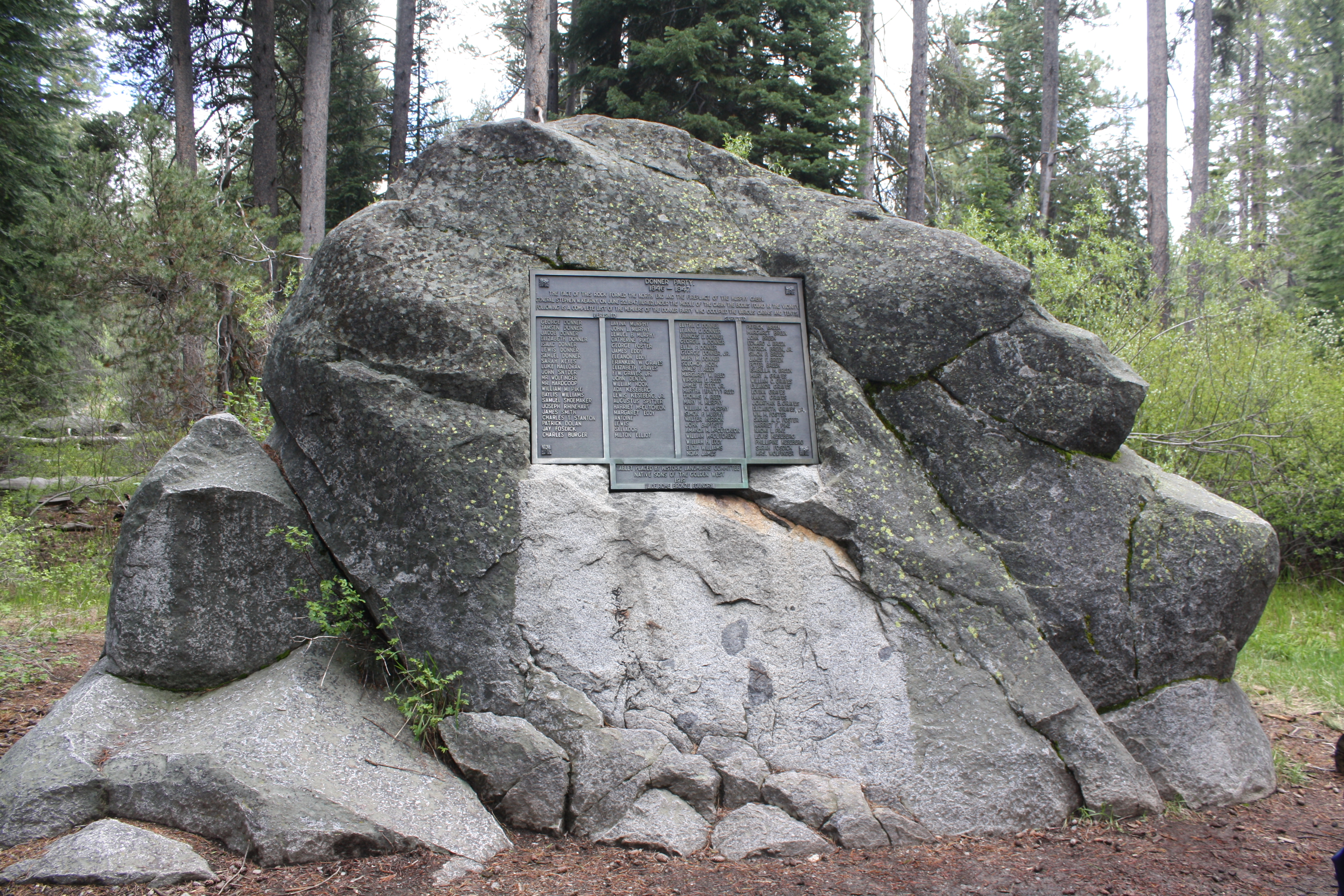Donner Lake State Park
Last spring, I had the good fortune to retrace the steps of the Donner Party. This post is part of the story of my journey. If you want to begin at the beginning, go here first. Big thanks to the Indiana Arts Council for helping to make this happen.
The Donner Late Historic Site Park has a brand new information center, a little museum with a few items on display and lots of information about the Donner Party and the lake.


It’s built on the eastern end of the lake, right where the Graves family and others camped during the winter of 1846. When they turned back down the mountain because the snow prevented their crossing, they made their way to a cabin that had been built the year before for a teenager, Moses Schallenberger, who had volunteered to winter there with the wagons and belongings of his own group traveling west that year.
Outside the museum, by the giant memorial statue, you can see where the cabin stood. The corners are marked in the ground.
Inside the museum there are lots of neat things to see:

Samples of clothing and maps. Look at those boots. It’s easy to see why they didn’t last with all that walking and the snow. Most everyone who arrived at Sutter’s Fort had rags tied around what was left of their boots, anything to help protect their feet from the cold.
Imagine all the barrels they needed, full of salt and flour and other supplies.
A wagon yoke, like the ones Franklin Graves turned into snowshoes for those who were leaving to get help.

I could just imagine John Snyder whipping the team up the hill when I saw this.

I met a really nice volunteer at the center named Greg who showed me, from his personal collection, a sample of some artwork he’d clipped that was in a magazine the year before. It’s an artist’s rendition of William Eddy and Mary Graves, dragging the deer they killed back to the camp. You can see those oxen-yoke snowshoes on their feet. You can see in the background, the others, roasting the remains of Jay Fosdick over the fire.
An internet search turned up that the artist is Andy Thomas. I really love this image.
The biggest treasure inside the center has to be The Gun.

The actual gun, owned by William Foster, often used by William Eddy, that was used to kill the deer above.
More on that soon in another post.
But the best part of the center has to be this lovely memorial outside:
It was dedicated in 1918. The height of the stones you see above is 22 feet – the height of the snow that winter.
Maybe it’s easier to appreciate that by looking at me standing on the ground next to it:

That is an unimaginable amount of snow. It’s just hard to wrap my head around how they lived there with so much snow underneath them.
The monument is beautiful and strong and powerful. I read once that the artist surprised everyone by including the mother and children along with the man. He wanted to show how entire families were impacted.
I also read the height was deliberate. These sculpted pioneers will hopefully always remain above the snow.

If you walk a little farther down a path, you can see the rock that is believed to be the giant stone that the Murphys built their cabin against. There’s a list of all the Donner Party members on a plaque.

There are some inaccuracies with the plaque, but it was erected a hundred years ago. So I think that’s to be expected.
It was hard to locate where the Graves cabin would have stood. There is no marking for it. It’s likely closer to where the interstate runs now. But standing there with the maps in my hand from my research I was blown away by how far away it was from the others. I had read that, but hadn’t pictured just how much distance Franklin Graves put between himself and everyone else.
Still, I could look out and imagine. Pretend I couldn’t hear the traffic on the interstate. Listen to the birds and the breeze and the water in the creek. It’s peaceful here. Quiet. Serene. I’d love to see what it looks like in winter.
But I can imagine.

For the next post in this series, go here.




